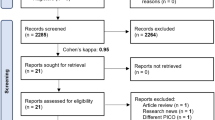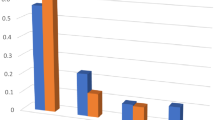Abstract
Gastrointestinal complications following hematopoietic stem cell transplantations (HSCTs) are common, but it is unknown how often gastroenterology consultation (GEC) early post BMT leads to specific changes in patient management. We aimed to determine the reason(s) for GEC, the diagnoses found through GEC, whether the advice or intervention led to change(s) in management and if intervention led to any adverse outcome within the first 100 days post HSCT. We undertook a retrospective review of all patients at least 18 years old (n = 197) who underwent HSCT between November 1990 and April 1998. Of these, 79 patients had 92 consultations for a total of 163 separate GE problems within the first 100 days post HSCT. Data were obtained through chart review. It was determined whether the intervention or advice given by the consultant led to actual changes in patient management or outcome. We found that the characteristics more likely to be associated with GEC included female patient vs male (P = 0.03), allogeneic vs autologous transplants (P < 0.001), hematologic vs solid malignancies (P = 0.006), and leukemias vs lymphomas (P = 0.013). Overall, a definitive diagnosis for an identified complaint was made in 71% (range 25–87%). A change in management was effected in 54% of cases (range 0–59%). Endoscopy led to perforation and subsequent death in two patients (1.8%). Gastrointestinal disease was a direct cause of death in 2.5% of all patients. In conclusion, a definite diagnosis was reached in 71% of gastrointestinal problems and management was effected in 54% of cases. Since endoscopy was associated with a mortality of 1.8%, minimizing its use for the cases in which no impact is made, should be considered. Bone Marrow Transplantation (2001) 28, 289–294.
This is a preview of subscription content, access via your institution
Access options
Subscribe to this journal
Receive 12 print issues and online access
$259.00 per year
only $21.58 per issue
Buy this article
- Purchase on Springer Link
- Instant access to full article PDF
Prices may be subject to local taxes which are calculated during checkout
Similar content being viewed by others
References
Kaur S, Cooper G, Fakult S, Lazarus H . Incidence and outcome of overt gastrointestinal bleeding in patients undergoing bone marrow transplantation Dig Dis Sci 1996 41: 598–603
Vishny ML, Blades EW, Creger RJ, Lazarus HM . Role of upper endoscopy in evaluation of upper gastrointestinal symptoms in patients undergoing bone marrow transplantation Cancer Invest 1994 12: 384–389
Wolford JL, McDonald GB . A problem-oriented approach to intestinal and liver disease after marrow transplantation J Clin Gastroenterol 1988 10: 419–33
Johnson MC, Pinkas H, Elfenbein GJ . Endoscopy in the bone marrow transplant patient presenting with GI symptoms: is it useful? Gastroint Endosc 1994 40: P42 (Abstr.)
Wolford JL, McDonald GB . Gastrointestinal bleeding after marrow transplant: a prospective study of risk factors, etiology and outcome Gastroenterology 1987 92: 1697 (Abstr.)
Nevo S, Swan V, Enger C et al. Acute bleeding after bone marrow transplantation (BMT) – incidence and effect on survival. A quantitative analysis in 1,402 patients Blood 1998 91: 1469–1477
Price KJ, Thall PF, Kish SK et al. Prognostic indicators for blood and marrow transplant patients admitted to an intensive care unit Am J Crit Care Med 1998 158: 876–884
McDonald GB, Sharma P, Hackman RC . Esophageal infections in immunosuppressed patients after marrow transplantation Gastroenterology 1985 88: 1111–1117
Wheeler RR, Peacock JEJ, Cruz JM, Richter JE . Esophagitis in the immunocompromised host: role of endoscopy in diagnosis Rev Infect Dis 1987 9: 88–96
Goodman JL, Winston DJ, Greenfield RA et al. A controlled trial of fluconazole to prevent fungal infections in patients undergoing bone marrow transplantation New Engl J Med 1992 326: 845–851
Wu D, Hockenberry DM, Brentnall TA et al. Persistent nausea and anorexia after marrow transplantation: a prospective study of 78 patients Transplantation 1998 66: 1319–1324
Spencer GD, Hackman RC, McDonald GB et al. A prospective study of unexplained nausea and vomiting after marrow transplantation Transplantation 1986 42: 602–607
Cox GJ, Matsui SM, Lo RS et al. Etiology and outcome of diarrhea after marrow transplantation: a prospective study Gastroenterology 1994 107: 1398–1407
Chung SC, Leung JW, Sung JY et al. Injection or heat probe for bleeding ulcer Gastroenterology 1991 100: 33–37
Selby JV, Friedman GD . US Preventive Services Task Force. Sigmoidoscopy in the periodic health examination of asymptomatic adults JAMA 1989 261: 594–601
Author information
Authors and Affiliations
Rights and permissions
About this article
Cite this article
Fallows, G., Rubinger, M. & Bernstein, C. Does gastroenterology consultation change management of patients receiving hematopoietic stem cell transplantation?. Bone Marrow Transplant 28, 289–294 (2001). https://doi.org/10.1038/sj.bmt.1703130
Received:
Accepted:
Published:
Issue Date:
DOI: https://doi.org/10.1038/sj.bmt.1703130
Keywords
This article is cited by
-
Multi-parametric MRI in the diagnosis and scoring of gastrointestinal acute graft-versus-host disease
European Radiology (2023)
-
Endoscopy Is Not Associated with Infectious Adverse Events After Hematopoietic Cell Transplantation: A Retrospective Cohort Study
Digestive Diseases and Sciences (2022)
-
18F-FDG-PET-MRI for the assessment of acute intestinal graft-versus-host-disease (GvHD)
BMC Cancer (2021)
-
Magnetic resonance enterography for assessment of intestinal graft-versus-host disease after allogeneic stem cell transplantation
European Radiology (2015)
-
18F-FDG PET/CT for the assessment of gastrointestinal GVHD: results of a pilot study
Bone Marrow Transplantation (2014)



